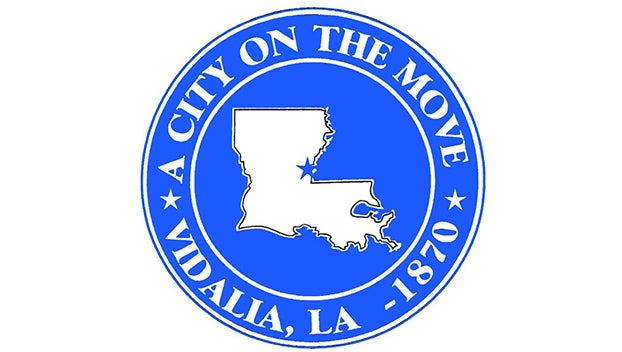Spirits of Natchez: Charboneau Distillery products now on shelf
Published 12:05 am Sunday, November 23, 2014

Charboneau Distillery co-owners, Doug and Jean-Luc Charboneau, stand next to their still. The Charboneaus distilled their first batch of rum in October with the hopes of distributing their product throughout Mississippi. (Sam Gause/The Natchez Democrat)
NATCHEZ — If you draw a map of all the places sugarcane is grown in the Mississippi River Valley, Natchez is dead center.
That map, with Natchez front and center, hit Mississippi shelves this weekend screen printed onto bottles of handcrafted, locally produced rum.
Charboneau Distillery’s first batch of rum was distilled Oct. 14.
With state and federal approval the distillery’s spirits went on sale Saturday at King’s Tavern — the historic inn the Charboneau family owns next to the distillery — and is available for sale in liquor stores Monday.
“We collect aged rums, and we liked rum because of how it tastes,” said Doug Charboneau, who runs the distillery along with his son Jean-Luc.
“We wanted to do something in connection with King’s Tavern that could promote tourism, could add something to do in Natchez, and rum made sense. The resource to make it is here and the increase in small distilleries around the country means there are a lot of people we can learn from.”
But while more than 700 micro-distilleries have opened across the country in recent years, Charboneau Distillery is only the second legal distillery in Mississippi. The first was Cathead Vodka.
“Micro-distilleries are to the 2010s what (beer) microbreweries were to the 1990s,” Jean-Luc said.
The Charboneau distillery’s product is produced using raw sugar and molasses from a Louisiana mill and Natchez municipal water purified through reverse osmosis. Natchez’s water has received numerous awards for its drinkability, Doug said.
The distillery has to use Louisiana sugar, he said, because Mississippi has only approximately 80 acres of sugarcane grown annually.
“Most of that is small family plots that is grown to make syrup,” he said.
Charboneau aims to produce between 1,500 and 2,000 cases of rum a year.

Jean-Luc Charboneau bottles rum Thursday. All of Charboneau Distillery’s rum is bottled, corked, labeled and sealed by hand. (Sam Gause/The Natchez Democrat
The process starts with a truck drive to Lafayette, where the Charboneaus pick up two 2,000-pound bags of sugar and molasses.
Back at the distillery, they add a mixture of sugar, molasses and yeast into a 300-gallon tank heated to 106 degrees, adding nutrients to feed the yeast as needed.
After 48 to 60 hours, the yeast has spent itself converting the sugar to alcohol and carbon dioxide, and the Charboneaus add 150 gallons into their steel and copper still, which is steam heated to 180 degrees, evaporating and recondensing the alcohol from the mixture into a 180-proof spirit.
The first gallon — known as the heads — is tasted but not bottled.
The gallons that follow — the hearts — are moved to a station where the rum is eventually cut with water down to an 80-proof spirit and bottled.
“It’s got a warm, sweet sugar-water taste on your tongue with just a little alcohol taste in the back of your mouth,” Doug said. “It’s good rum, and you can even drink it straight if you want.”
The end of the distillation run — the tails — is good enough to drink, but not of a quality one would want to bottle, Doug said. It can be re-circulated through the still through five runs.
On distillation days, the entire process takes approximately eight hours, including cleaning.
The distillery is located in the former bar on the King’s Tavern, which was originally constructed circa 1900 as a grocery store. To accommodate the still, storage and other necessary infrastructure, the Charboneaus had to take the interior of the building nearly apart.
“We knew we weren’t going to have a bar here, so I decided why don’t we take it down to the walls and see what we can do,” Jean-Luc said.
The end result is an open space with brick walls, hardwood floor and an open ceiling with wood supports. A row of wooden casks sits against the front wall, while the ingredients and cases of liquor occupy the space behind the still and mixing tank.
“We really wanted to make it feel industrial and old,” Doug said.
“When we started this process 18 months ago, we wanted to focus on getting King’s Tavern back open and running, and then we were able to move on to this. It made sense to turn this building into something other than a bar.”
Each bottle of Charboneau rum is bottled, corked, labeled and sealed by hand.
“Our bottles can be recycled but they can also be reused, and if someone brings me their empty bottle back, I’ll sterilize it and use it again,” Doug said. “For every bottle I get back, I’ll donate a dollar to the Natchez Children’s Home.”
As the distillery’s business grows, plans are in place to start aging rum in used bourbon casks, Doug said.
Until then, those who want their own aged Natchez rum will be able to purchase a miniature cask in the King’s Tavern gift shop, he said.
Tours of the distillery will soon start on Fridays and Saturdays, and the rum will retail at the King’s Tavern craft liquor shop for $32 a bottle.






